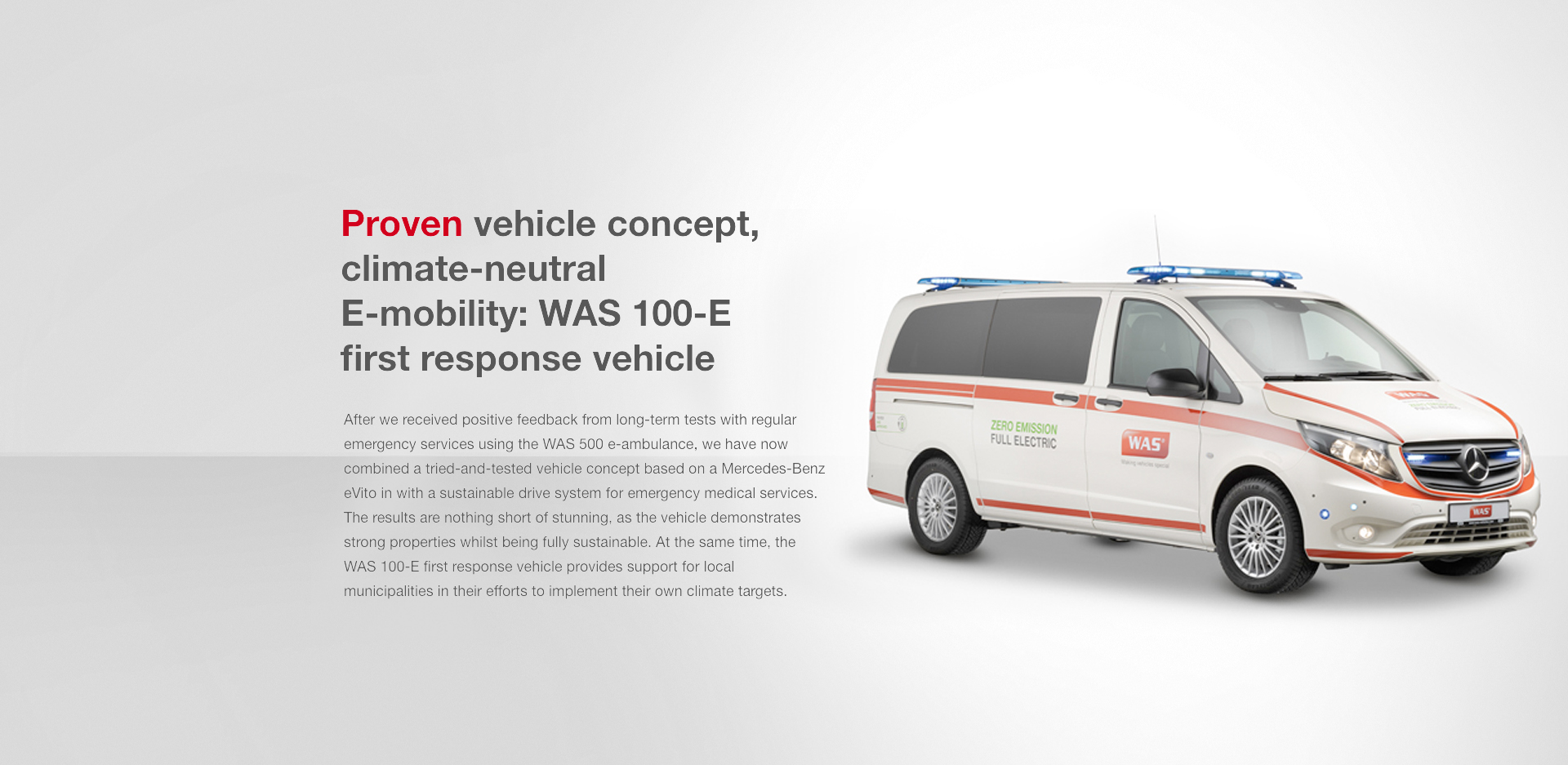


As a popular and proven base vehicle, the Mercedes Benz eVito also impresses with an electric drive. The WAS 100-E first response vehicle means that WAS can once again demonstrate its expertise in vehicle concepts with electric drive technology for emergency services. Climate neutrality, flexibility and amazing driving characteristics are just three of the factors that show the potential of e-mobility for the emergency services.
Beyond the ecological and economic advantages, the WAS 100-E first response vehicle concept impresses users with its internal features. This is why, when the vehicle was converted, the focus was mainly on crew safety while not losing the spare weight capacity for the payload. Combined with how the WAS cabinet system effectively uses space, all the equipment can be stored in an easily accessible way. In total, the WAS 100-E first responder offers an average load capacity of 610 kg. This means that with an estimated crew weight of 3 x 75 kg, there is an impressive spare capacity of 385 kg! Of course, alongside the spare weight capacity required by DIN EN 75079, the vehicle also meets the other requirements of the currently applicable standard for emergency ambulances. And since each field of application brings with it its own challenges, a range of cabinet modules are available for designing the vehicle concept on a case-by-case basis. The medical technology that has been installed is supplied with power by plug connections built into the cabinet system - the medical equipment’s power supply is fully guaranteed, and it works independently of the drive system with electric motor.
| Model | Mercedes-Benz eVito Tourer Pro / Long |
| Peak performance | 150 kW / 204 hp |
| Nominal performance | 70 kW / 95 hp |
| Torque | 365 Nm |
| Battery capacity | 100 kWh (90 kWh usable) |
| Range | WLTP 370 km |
| Charging power | AC 11 kW |
| AC charging time (0 – 100 %) | < 10 hours |
| Charging time | DC 110 kW |
| DC charging time (10 – 80 %) | 40 minutes |
| Max. speed | 160 km/h |
| Driving programmes | 3 |
| Recuperation levels | 5 |
| Permitted total weight | 3,500 kg |
| Empty weight with extension | 2,890 kg |
| Total payload | 610 kg |
| Payload with 3 persons, each 75 kg | 385 kg |
| Wheelbase | 3,200 mm |
* under real conditions, depending on the driving and application profile





